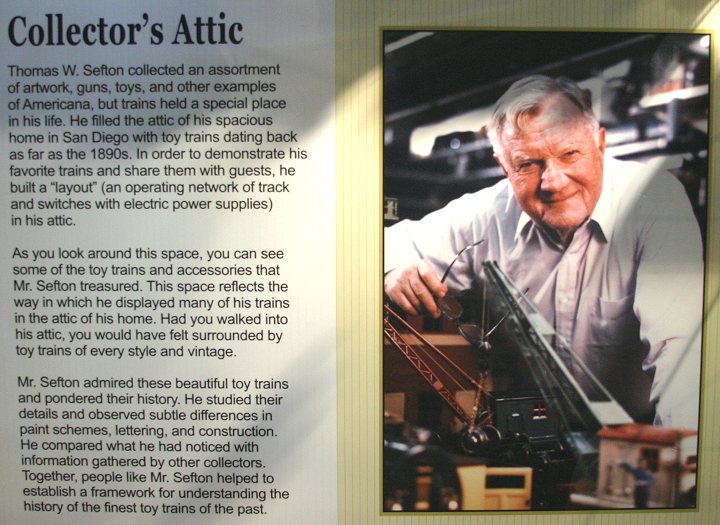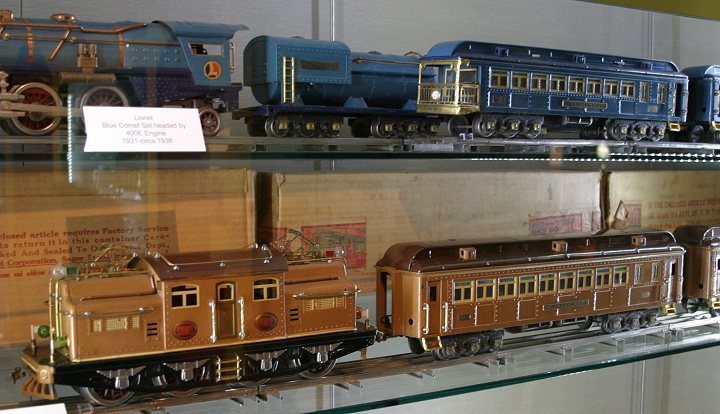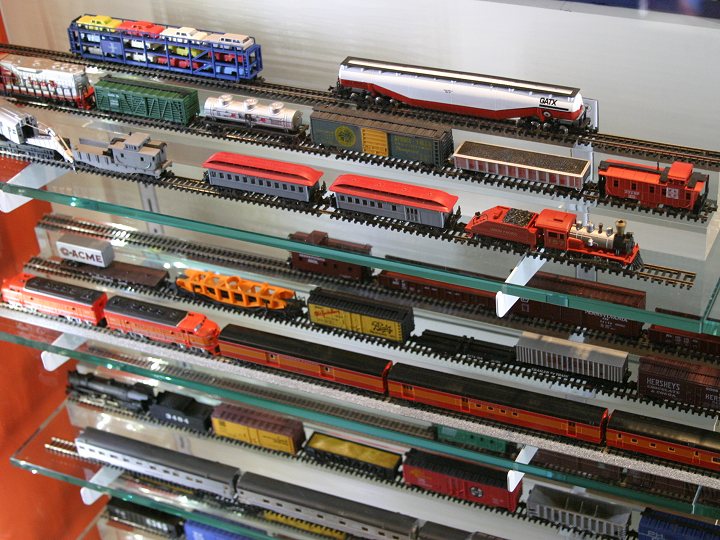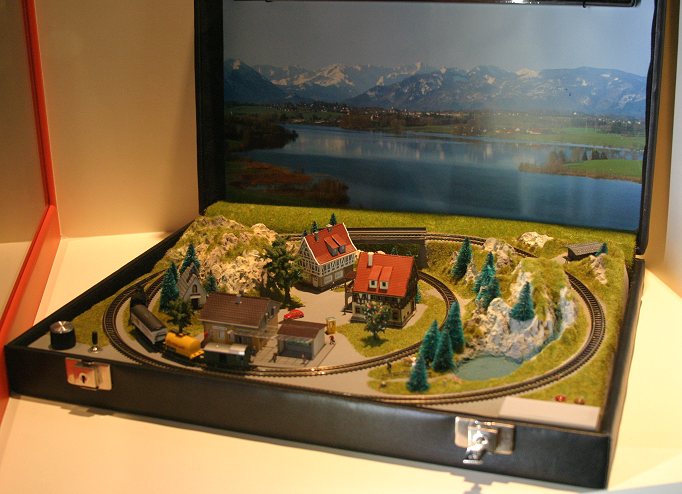| The Empire steam engine, long-time classic at the museum. |
Railroad Museum -- 2004, Part 1 of 2
Photos taken August 26, posted September 6, 2004
© 2004, Herbert E. Lindberg
As most of you know, the Railroad Museum in Old Town Sacramento tore out its model train exhibits and track layouts this year to make room for the spectacular collection of more than 10,000 models dating from the 1890's donated by Thomas W. Sefton. He also provided more than $1 million to suitably display the collection. The result is a substantial addition to the museum and a worthy tribute to Mr. Sefton. Mary and I went with our son and his wife and two grandchildren to view the displays on Thursday, August 26.
Aside for camera buffs: I took along my Canon 10D digital camera and an image stabilized lens to capture the essence of this new addition to the museum. From previous experience I knew that lighting would be a central challenge for taking pictures in the dramatic, but dark, atmosphere. The combination of the image stabilized lens and an effective ISO film speed setting of 800 was just barely enough to get pictures with the needed hand-held flexibility. I probably should have taken some backup pictures at ISO 1600 but was hesitant to do so because that speed introduces some graininess that trades off with blurred images of slower speeds. I settled for doing some post-processing of ISO 800 photos in which I was able to trade off excess image size for increased sharpness in smaller images that were still reasonably large. All of this, of course, had to be done within the time constraints of two pre-teen grandchildren who wanted to zoom through the museum and get on to a big lunch at Fat City.
| The Empire steam engine, long-time classic at the museum. |
Before going upstairs to the model train exhibit I couldn't resist taking the above shot of the Empire, the premiere steam engine at the museum on the main floor. Previous attempts with lesser ISO speeds and standard lenses had given only fuzzy suggestions of the magnificence of this engine. The added speed and image-stabilized lens yielded excellent results even for images substantially larger than this Web-sized example.
But on to the new model train exhibit -- this camera introduction was mainly to warn you that if you want to take pictures, you'll have to be exceptionally well prepared. A tripod would be a solution but they're not allowed, I presume because of the safety hazard of visitors tripping over the legs in the semi darkness.
A brief description of Mr. Sefton and his collection is given on the poster below:
| Thomas W. Sefton, toy and model train collector extraordinaire. |
 |
The beginning of the display included a wide variety of toys to hint at the scope of Sefton's collection. Among these were 1920's motor boats, cannon, farm tractors, a steam shovel, Buddy "L" trucks built before I was born, and even a toy electric stove built by Lionel that really cooked.
| Buddy "L" truck and fire engine, 1928. |
|
Lionel toy electric stove, 1930. |
| Lionel also made toy automobiles. |
But the emphasis of the collection is toy trains, thousands of them in every size and shape. These began as wind-up and inertia-driven friction toys in the late 1800's and progressed into "electric novelties" shortly after the turn of the century.
|
Boyer and Clark friction toy locomotive, 1898-1900 |
|
Electric toy trains made their debut circa 1906. |
There are lots of buttons to push for those who like action displays, starting with the back-lit graphic below that demonstrates how toy trains work, including an animated electric motor inside the engine (not seen below, because I didn't want action in a long photo exposure so I didn't press the button, yet!).
|
Animated poster on how a toy train works. |
|
|
Also on display are shelf upon shelf of engines, cars, and complete trains of all sizes from standard, to O, HO, N, and Z. The following three pictures are only a glimpse at the collection on display, which in turn is only a sampling of Sefton's complete collection. As the years go by the more extensive collection will be rotated in to keep the model train exhibit fresh, just as in art museums.
| The Lionel Blue Comet in standard gauge,
circa 1938 (top) Note the original cardboard boxes in which the copper-colored train was purchased. |
 |
|
Part of the extensive display of smaller-size trains |
 |
| Complete Z-size track layout and train in a suitcase. |
 |
But the main attractions are the extremely well executed O size and standard gage track layouts, beginning with the roundhouse below surrounded by trains, shipping platforms, houses, towers, lamps on lamp posts, and so on.
| Round house in an active setting, O size. |
| Roundhouse and tracks viewed from the opposite side. |
| Crop-in to the locomotive in the above photo. |
The standard-size track layout is even more spectacular. Please click below for Part 2 to see this display and other points of interest at the Railroad Museum.